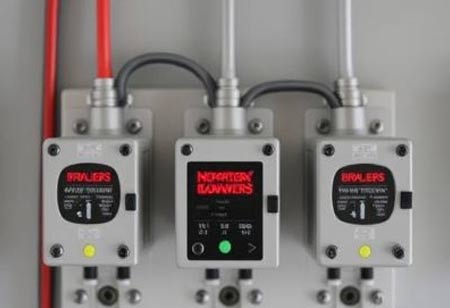Thank you for Subscribing to Electrical Business Review Weekly Brief
I agree We use cookies on this website to enhance your user experience. By clicking any link on this page you are giving your consent for us to set cookies. More info
The Future of High-Quality 3-Phase Converters
Advancements in 3-phase converters improve efficiency and automation in industries, helping manage energy use and ensuring sustainability. Ongoing innovations will continue to shape the energy landscape.

By
Electrical Business Review | Wednesday, May 28, 2025
Stay ahead of the industry with exclusive feature stories on the top companies, expert insights and the latest news delivered straight to your inbox. Subscribe today.
Fremont, CA: 3-phase converters are crucial in industrial applications and power management due to their efficiency and ease of handling heavy loads. As technology advances, these high-quality converters have improved performance and reliability, making them an essential choice for modern power management.
Improved Efficiency and Reliability
One of the most notable advancements in high-quality 3-phase converters is the significant improvement in efficiency. Modern converters are now designed using advanced semiconductor materials like Silicon Carbide (SiC) and Gallium Nitride (GaN), allowing higher switching frequencies and lower energy losses during conversion. This technological shift leads to power converters operating at cooler temperatures and having longer lifespans.
Moreover, optimized control algorithms have been developed to maximize the efficiency of these converters. The converters can accurately regulate voltage and minimize harmonic distortion by employing techniques like pulse width modulation (PWM) and advanced feedback systems. This enhances the reliability of the entire power system and reduces maintenance costs and downtime in industrial environments where uninterrupted power is critical.
Innovative Designs and Features
The design of high-quality 3-phase converters has also undergone significant transformation. Earlier models were often bulky and required extensive space for installation. In contrast, contemporary designs emphasize compactness and modularity. Manufacturers have introduced modular designs, which allow easier scalability and integration into existing systems. This enables businesses to expand their operations without overhauling their entire power infrastructure.
Furthermore, user-friendly interfaces have been developed, allowing for easier monitoring and control. Many modern converters now feature smart technology, integrating IoT capabilities that facilitate real-time data collection and remote monitoring. These advancements enable technicians to manage systems more efficiently, predict maintenance needs, and enhance operational safety.
Increased Automation and Connectivity
With the rise of Industry 4.0, manufacturers increasingly focus on creating converters that seamlessly integrate into automated systems. This includes communicating with other devices and systems, allowing for enhanced coordination and optimization of energy consumption. High-quality 3-phase converters now often come equipped with advanced communication protocols such as Modbus, CAN bus, and Ethernet.
This connectivity allows central control systems to manage multiple converters efficiently, leading to synchronized operation and improved load management. Furthermore, integrating cloud-based platforms enables data analytics, providing insights that can help businesses optimize their energy usage and operational performance.








